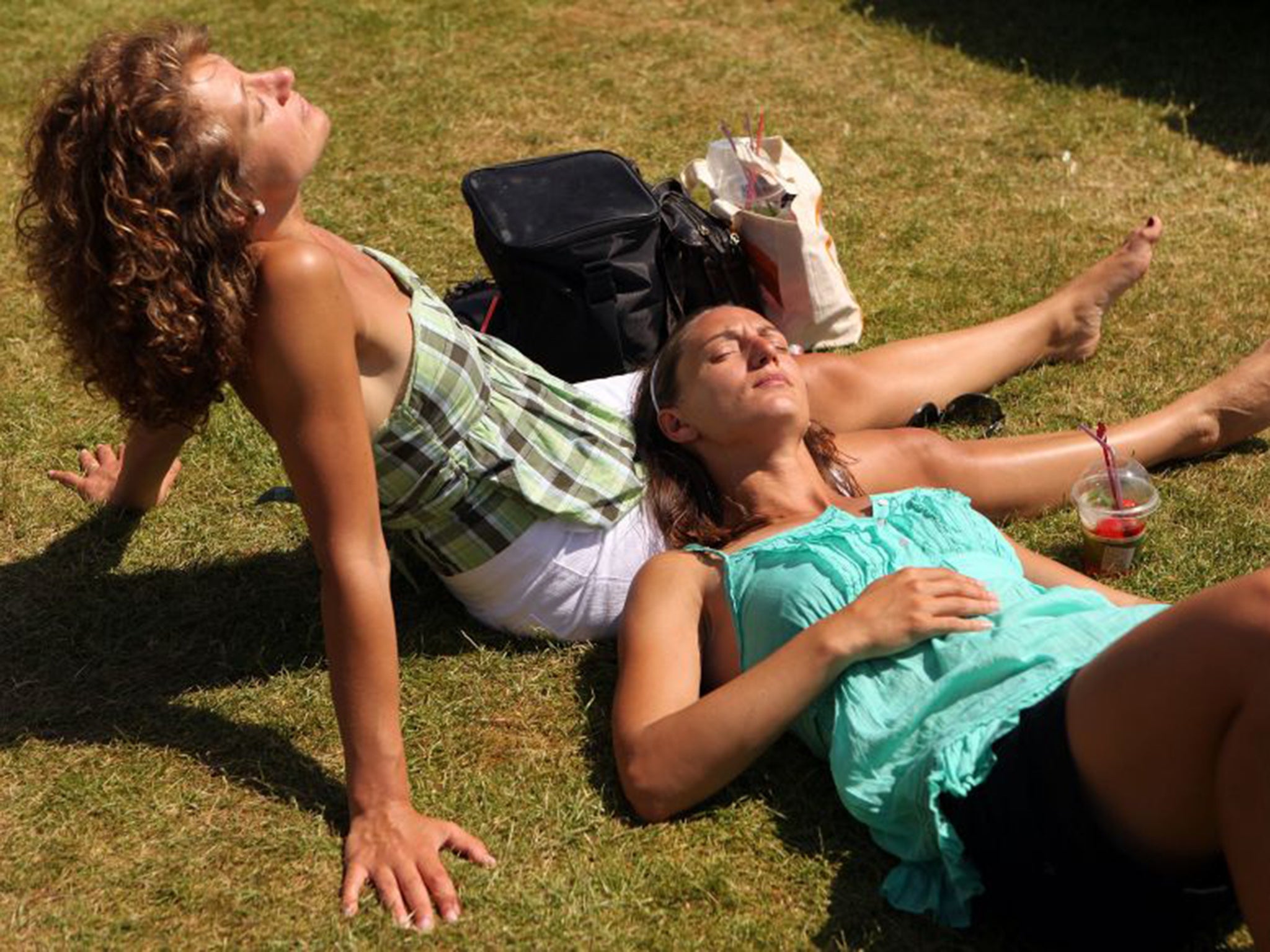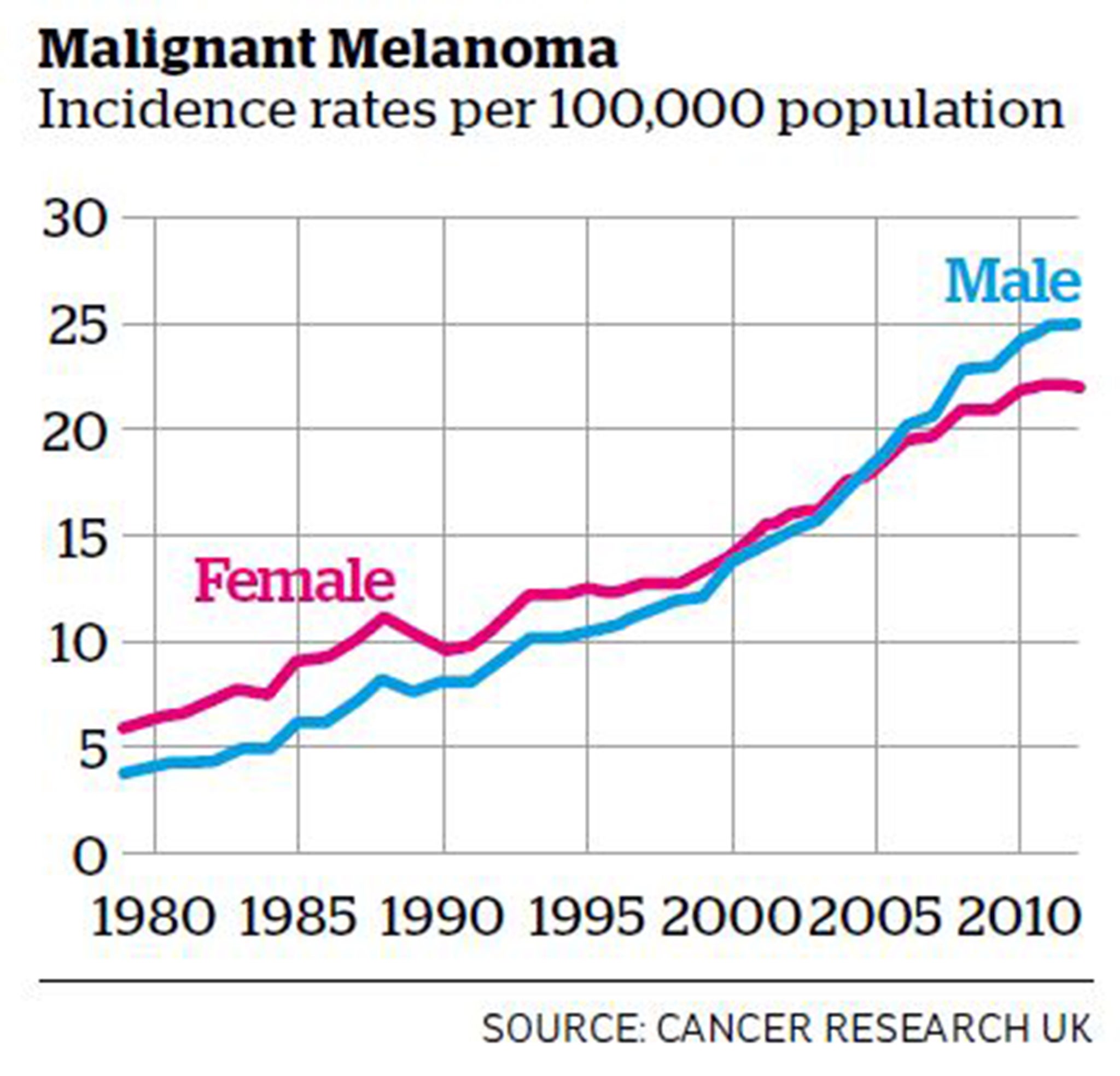There's no safe way to get a natural sun tan, says official health guidelines
Having a tan provides little protection against further exposure to the sun

Holidaymakers should use at least factor 15 sunblock and always reapply the cream after swimming even if it is water-resistant, according to official new guidance.
There is no healthy way to get a tan from sunlight, according to the National Institute for Health and Care Excellence (Nice). And having a tan provides little protection against further exposure to the sun.
The report also said sunscreen should also be applied twice if people are going to be out long enough to risk burning - once half an hour before going out, and again when they go out in the sun.
Adults need between six and eight teaspoons (35ml) of sun cream per application and should always aim for an SPF (Sun Protection Factor) of 15 or higher.
While people should expose their arms and legs to the sun for short periods in order to build up vitamin D, this had to be balanced against the risks of skin cancer.
Because people respond to the sun in different ways depending on their skin colour and geographical location, Nice recommends that health professionals provide individual one-to-one “skin “skin consultations” tailored to the individual’s level of risk,

Nice said it was not possible to get enough vitamin D by sitting next to a closed sunny window and it was also not possible to get enough vitamin D from sunlight between October and March in the UK.
It stopped short of recommending a specific amount of time people should stay out without sun cream to build up vitamin D, but said experts agreed that “short (less than the time it takes for skin to redden or burn), frequent periods of sunlight exposure are best for vitamin D synthesis.”
It said this type of exposure is also “less likely to result in skin cancer”.
Many adults in Britain have low levels of vitamin D (23% aged 19 to 64 and 21% aged 65 and over), as do 14% of children aged four to 10 and 22% of children aged 11 to 18.
Low levels of vitamin D are linked to musculoskeletal conditions such as rickets - which is re-emerging among children - and lack of muscle strength and function.
In the wide-ranging guidance, Nice warns that applying sunscreen too thinly reduces the amount of protection it gives.
Higher SPFs - such as 30 - may offer better protection but do “not necessarily mean people can spend more time in the sun without the risk of burning”.
Nice said sunscreens should be “re-applied liberally, frequently and according to the manufacturer’s instructions”, including after being in the water (even if it is water-resistant) and after towel drying, sweating or when it may have rubbed off.
Groups of people who should take extra care to avoid skin damage and skin cancer include babies and children, those with fair skin or hair, people with lots of moles or freckles and those with a family history of skin cancer.
Professor Gillian Leng, deputy chief executive and director of health and social care at Nice, said: “How much time we should spend in the sun depends on a number of factors including geographical location, time of day and year, weather conditions and natural skin colour.
“People with lighter skin, people who work outside and those of us who enjoy holidays in sunny countries all have a higher risk of experiencing skin damage and developing skin cancer.
“On the other hand, people who cover up for cultural reasons, are housebound or otherwise confined indoors for long periods of time are all at higher risk of low vitamin D levels.”
Join our commenting forum
Join thought-provoking conversations, follow other Independent readers and see their replies
Comments